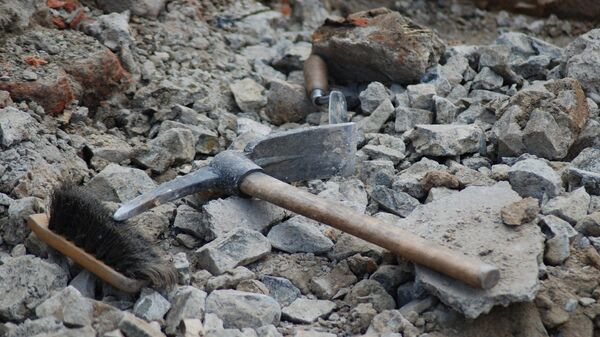The footprint was initially found in 2010 by a student at the paleo-archaeological site Pilauco in Osorno, a south-central city in one of Chile's four provinces which make up the Los Lagos region. Researchers used the last several years to determine the estimated age range and to rule out the possibility that the print was created by another species of animal.
The findings, which were published in the peer-reviewed journal PLOS One, show that the footprint belonged to the ichnospecies Hominipes modernus, a close relative of Homo sapiens. An inchospecies is defined as any species known only from a trace fossil, such as a footprint.
Experiments on the organic makeup of the material around the print pointed to a range of possible dates, resulting in a median age of about 15,600 years.

"In order to evaluate the origin of the ichnite, trackmaking experiments are performed on re-hydrated fossil bed sediments. The results demonstrate that a human agent could easily generate a footprint morphology equivalent to the sedimentary structure when walking on a saturated substrate," reads the study's abstract.
"Based on the evidence, we conclude that the trackmaker might well have been a bare-footed adult human. This finding, along with the presence of lithic artifacts in the same sedimentary levels, might represent further evidence for a pre-Clovis South American colonization of northern Patagonia, as originally proposed for the nearby Monte Verde site."
The Monte Verde archaeological site is located in the nearby port city of Puerto Montt in the Llanquihue Province. Discovered in 1975, the site would go on to become one of the oldest known examples of human habitation in the Americas.
— AJ+ (@ajplus) April 26, 2019
Karen Moreno, a paleontologist with the university who has overseen the study, told Reuters, "Little by little in South America, we're starting to find sites with evidence of human presence, but this is this oldest in the Americas."
She added that this was the first evidence of humans in the Americas older than 12,000 years, and that researchers have also found bones belonging to animals, including those of primitive elephants.
This latest find comes after researchers found footprints in Canada's British Columbia dating to 13,000 years ago. That study was published in PLOS One as well, and included information on a total of 29 footprints that were found at a site on the province's Calvert Island.

